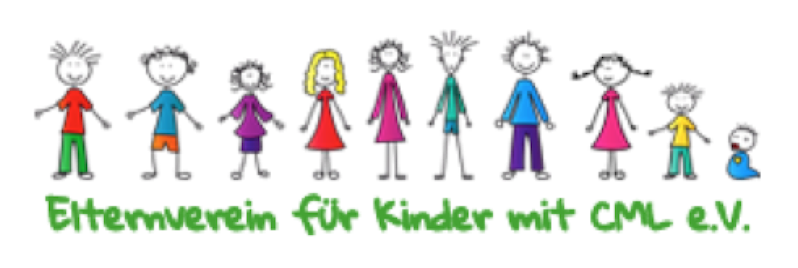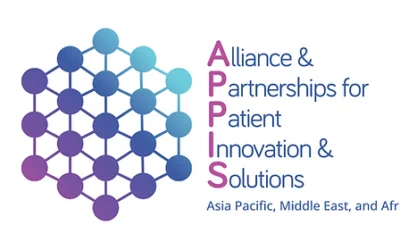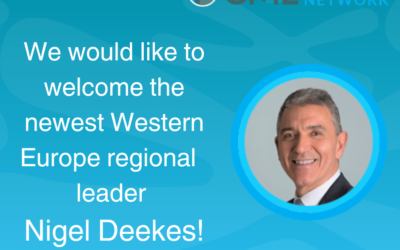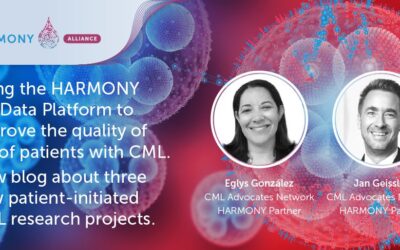From 31.05.-02.06.2019 the members of the Parents’ Organisation for Children with CML e.V. met in Dortmund, Germany. 20 families followed the invitation of the first chairman Ullrich Duckstein and his wife. For many of them, it was a reunion but for 3 families it was the first personal contact with other affected parents after CML diagnosis of their child.
Our dear Cornelia Borowczak, a very active member of this organization, mother of a CML patient as well as a member of our CML Community Advisory Board has shared with the global CML community the following information about CML and children. Don’t miss these interesting updates on “Pediatric Chronic Myeloid Leukemia“:
Kids only
After a joint dinner, the young CML patients and their siblings met with the speakers. In a round-table discussion without their parents, they had the opportunity to ask questions and talk about their concerns and needs. But also Prof. Meinolf Suttorp, retired CML expert for children and adolescents from University Hospital Dresden, Germany, Prof. Markus Metzler and Verena Hildebrand, study director and study physician from the University Hospital Erlangen, Germany, took the opportunity to learn from the experiences of the children and adolescents.
Side effects, interactions of the TKI’s with stimulants, therapy stop and adherence are topics that concern young CML patients.
Fun and knowledge exchange on Saturday
Early Saturday morning, the boys and girls made their way to the Movie Park in Bottrop, where they enjoyed wild roller coaster rides and creepy attractions. The little ones spent the sunny day with Claudia Duckstein in the Westfalenpark.
For the parents, further training was on the agenda. Prof. Suttorp explained the basics of CML and the differences between a child’s CML and that of an adult. CML in children under 18 is very rare and accounts for less than 10% of all CML diseases and less than 3% of all pediatric leukaemias. It is extremely rare in under 1-year-olds, 0.07 of 100,000 new cases per year in under 14-year-olds and 0.12 in young adults. The average age at diagnosis is 11 years and there are more boys than girls affected. While 90-95% of adults are diagnosed in the chronic phase, it is 85% for children and adolescents, 15% are already in acceleration or blast crisis. The young patients show higher numbers of leukocytes and thrombocytes than adults, also the spleen is more enlarged.
The beginning of the end – when and how to stop TKI therapy
If CML is no longer detectable under TKI therapy, it is referred to as functional healing. Patients who stop the therapy are in therapy-free remission (TFR). Due to the strong side effects of the drugs and the lack of long-term experience after decades of use, it is also the aim of young patients to stop the therapy after a defined period of time. The experiences in this point came up from the stop studies of adults.
They prove the feasibility of safe discontinuation after reaching a deep molecular remission. The minimum recommended therapy duration differs for the different TKIs so that conservatively formulated criteria for discontinuation are recommended outside clinical studies. The availability of an accurate, sensitive and internationally standardised quantitative PCR, the quick availability and immediate evaluation of the PCR results, the implementation of the PCR every 4-6 weeks and structured plans for intervention and a restart of therapy due to an increase in the BCR-ABL values are the institutional prerequisites for a therapy stop. Prof. Metzler mentioned supporting criteria to decide for a discontinuation try:
- the institutional requirements are met
- the patient was not assigned to a high-risk group at diagnosis
- typical b2a2 or b3a2 BCR-ABL transcripts or atypical transcripts that can be quantified over 4,5 log steps
- the chronic phase of CML
- optimal response to first-line therapy
- duration of TKI therapy longer than 5 years
- MR4.5 has been reached
- sustained deep molecular remission (MR4 or MR4,5) for more than 2 years determined in certified standardized laboratory
He also mentioned aspects that should be considered in practice, e.g. maintenance therapy with interferon after TKI discontinuation could be a way to improve the stability of remission after discontinuation. The fact that about 30% of the patients can develop a withdrawal syndrome, what is an acute inflammatory syndrome in which muscle and joint pain are the main symptoms, must be communicated. In most cases, the severity of the syndrome decreases within a few weeks. Anti-inflammatory drugs and/or corticosteroids could be given to treat the symptoms.
Stopping treatment brings advantages, but also disadvantages. The most important aspect is the perspective of sustained drug-free remission, another is the avoidance of adverse events. Disadvantages are the uncertainty about the expected success. If the haematological remission is lost, the therapy will restart from the beginning. Both, withdrawal syndrome and the tight controls can be very stressful for the patient and family members. Each therapy stop is an individual decision in which the “Pro’s and Con’s” have to be weighed carefully.
Even though a therapy stop is now a goal that both, doctors and patients, are looking for Prof. Metzler emphasised that out of 100 patients only 50% achieve a deep molecular remission that a stop can be considered. Only 10 out of 100 patients actually stop taking drugs.
The number is even lower for children and adolescents. In the Paed-II study, 7 out of 140 patients were able to stop, 5 of them had to start therapy again. The follow-up time of the two patients who could successfully stop is 6 and 4 1/2 years. So far only 28% of the young patients were able to stop successfully, while 45% of the adults remain therapy-free (EURO-SKI study).
Recurrences usually occur within the first 6 months, but they have also been observed after more than two years. Whether the prescribed TKI (imatinib, nilotinib or dasatinib) plays a role in the success of stopping could not be shown yet. Direct comparisons with stopping after different pre-therapies are still ongoing. So far, there is no evidence that it is important due to which TKI deep molecular remission is achieved.
After restarting therapy, all patients responded to the treatment again. Stopping treatment, even more than one time, is safe, but the aforementioned mentioned criteria must be met as well as close follow-up. There is no absolute certainty about the safety of discontinuation over decades. The same applies to the potential long-term side effects of life-long therapy.
If a therapy stop is considered, it is important to determine before the stop what strategy is to be pursued if the therapy has to be resumed.
Fatigue – not only after lunch

For children and adolescents with cancer, fatigue decreases the patient’s power more and more and they feel increasingly exhausted. These changes may be various, depending on the character of the child, the type of illness and treatment, the local and social environment and the family culture. Fatigue can occur for a short period (acute), in phases or become sustained (chronic).
Sometimes patients can also show personality changes in the course of fatigue. Chronic fatigue is a symptom and should not be confounded with chronic fatigue syndrome (CFS) or myalgic encephalomyelitis. There are predictive factors for children and adolescents with cancer to develop fatigue:
- environmental factors such as lack of daily routine, family unrest, waiting times for medical consultations, exhausting conversations and difficult decisions
- personal situation (e.g. during hospitalisation, unfamiliar surroundings, anxiety, depression, boredom)
- family background and culture (regarding dealing with the disease, pain, weakness etc.)
- stress factors related to treatment (intensive, exhausting therapies and their side effects, nutritional disorders/weight loss, anaemia, metabolic changes)
Fatigue could appear with all TKI’s. There is almost no disease and no drug fatigue is not also observed. Fatigue usually improves but can persist. In any case, medical causes such as anaemia or thyroid dysfunction must be excluded and treated accordingly.
The type and intensity of fatigue treatment should be decided on an individual basis. A personal consultation, stress management, meditation and yoga can be helpful. Drug treatment can only be applied in the case of appropriate causes (anxiety, depression, nutritional disorders, bleeding complications).
Although psychostimulants would have a stimulating effect they would also have strong side effects such as nervousness, insomnia, headaches and nausea. Short-term use of steroids would have an anti-inflammatory effect and can reduce fatigue, but so far no real benefit has been demonstrated. Prof. Metzler is rather critical of dietary supplements. The non-drug therapies include a regular daily routine (with fixed rest and sleeping times, regular meals, regularly phases of activities adapted to the child’s strengths and abilities and regular contact with siblings, relatives, friends and other caregivers), psychosocial support and physical activity.
Quality of life may also be affected by other adverse events, which vary from TKI to TKI. Patients should be informed about the advantages and disadvantages of different drugs. The selection of the individually preferred TKI would be based on the efficacy’s and the range of side effects, taking into account the individual risk factors. In particular, older patients with cardiovascular risk factors may have advantages over dasatinib or nilotinib, patients with chronic respiratory diseases may have advantages over dasatinib and patients with chronic inflammatory bowel disease may have advantages over bosutinib.
Imatinib:
– It is associated with mild to moderate long-term side effects that can significantly impair the quality of life. These include muscle cramps, diarrhoea, weight gain, fatigue, peripheral and periorbital oedema, bone and joint pain, nausea and others.
Dasatinib:
– It is associated with the risk of pleural effusion and should, therefore, be avoided in heart failure, lung disease, untreated arterial hypertension.
– It has the rare complication of pulmonary arterial hypertension (PAH), which is why patients with pre-ordered PAH should receive an alternative TKI therapy.
– Dasatinib inhibits platelet function, patients under oral anticoagulation, therefore, have an increased risk of bleeding.
Nilotinib:
– It indicates hyperglycaemia in high-risk patients, therefore caution is advised in cases of poorly controlled diabetes mellitus.
– It should be taken on an empty stomach due to faster absorption with high-fat foods.
– It has been associated with vasoconstrictive and vascular obstructive side effects such as coronary heart disease, cerebrovascular disease and arterial obstructive disease and should be used after significant reduction of risk factors (smoking, hyperlipidemia, arterial hypertension, diabetes mellitus).
Bosutinib:
– It is associated with increased liver toxicity and a higher rate of diarrhoea, especially during the initiation phase of therapy.
– Patients with pre-existing organ system disorders should be treated with caution.
– Patients should be well informed about the severity and kinetics of these side effects and the established dose adjustment regimes should be followed.
Growth retardation under TKI treatment – a tough topic
Every 7 years, the entire human skeleton is completely renewed by bone building and degeneration processes. These processes are in balance. Under TKI therapy, growth retardation caused by the influence of the drug on bone metabolism were observed in children. Why these growth retardations are much more pronounced in some children than in other has not yet been clarified.
A quarter of children have particularly severe growth disorders. Especially in families with identical twins the differences in growth are very noticeable and often become a psychological burden for the children. The bone age is often lower than the biological age, which gives hope for gaining growth during puberty.
In the mouse model, it was shown that bone density is also affected by TKI. Prof. Suttorp, therefore, recommends that children exercise a lot in order to increase bone mass and to built reserves at a later stage.
In the mouse model, Bosutinib shows a lower impact on bone growth and appears to have a lower impact on bone metabolism.
Generic drugs – cheaper and of equal quality?
Generic drugs are subsequent drugs that come on the market after patent protection is finished. Both, generic and original, are based on the same active ingredient in the same quantity and dosage form but may differ in terms of excipients and the way they look.
Generic drugs are offered at a much lower cost because the enormous effort involved in drug development is eliminated. Prof. Suttorp points out, however, that European regulations tolerate a 10% fluctuation in the active ingredient content, which can lead to problems, especially in children, where the dosage is calculated according to the body surface. For 400 mg imatinib, a 10% variation means a tolerated range of 360 mg (90% active substance) to 440 mg (110%). It is conceivable that less active ingredient would lead to a worse response. If the amount of active ingredient is increased, it can lead to stronger side effects.
Further differences between the original preparation and the generic can be found in the active substance (crystal isoforms, amorphous granules, microencapsulation), by impurities, different excipients, the pressing pressure during production, the tablet shell, the capsule material and the divisibility.
However, generics manufactured in Germany would not differ from the original preparation. Nevertheless, Prof. Suttorp recommends not to change a generic more than once a year (https://onlinelibrary.wiley.com/doi/pdf/10.1002/pbc.27431).
Bone marrow fibrosis in CML – how often and how to examine?
Bone marrow fibrosis is a pathological proliferation of connective tissue (fibrosis) in the bone marrow. It is diagnosed with the help of a bone punch, a bone marrow puncture is not sufficient. This examination should be carried out with the diagnosis. If fibrosis has been diagnosed, the examination should be repeated after 6 months, possibly a third time after 12 months. During therapy with TKI’s, it should be suppressed and no longer detectable.
Severely handicapped
It is repeatedly stated that the degree of severe disability with CML is decided very arbitrarily. Prof. Suttorp and the Parents’ Association do not agree with this action of the authorities.
They want to develop a positioning letter that will be written by the paediatric CML experts because the classification of young CML patients is currently based on completely wrong criteria. This letter is to be presented at the next review of the Ordinance on Medical Care (VersMedV). This ordinance contains as an annexe the “Medical Care Principles”, on the basis of which the degree of disability (GdB) and the degree of damage consequences (GdS) are determined. It is hoped that the letter will lead to a fairer and more uniform classification of children and adolescents.
Structure and possibilities of CML trials in children
Verena Hildebrand gave a comprehensive insight into the work with the PAED II registry, which includes approximately 230 German patients. In order to ensure optimal diagnosis and treatment, it is very important to collect the clinical data of all cases occurring in Germany into a register, evaluate it and make it available to the pediatric hematologists. The study centre, for example, can give recommendations on therapy, the dosage of medication, a necessary change of medication or the appropriate time for a therapy stop. Participation in the register is voluntary and can be stopped at any time. The data should also be passed on to the study centre beyond the 18th birthday.
Final thoughts
This year’s parents’ meeting was once again a successful event, after that, all participants were able to return to a normal family life strengthened. The children and young people experienced carefree hours forgetting their worries for a short time.
At the same time, they had the opportunity to exchange ideas with other affected young people and experts. In the lectures, the parents were informed about the latest findings in dealing with CML and current therapy. During the two evenings and the breaks, experiences were exchanged. The conversations give courage and hope.
This year’s family reunion was made possible by the financial support of the “Löwenkinder” association and the Novartis company. Thank you so much for that.
Here you can download this article, thanks to Cornelia Borowczak, from Parents’ Organisation for Children with CML e.V, Germany: Family Meeting of the German Parents’ Organisation for Children with CML.
Here you can find the German version of this article, thanks to Cornelia Borowzack, from Parents’ Organisation for Children with CML e.V, Germany: Download hier auf Deutsch: Elternvereins für Kinder mit CML e.V.
Here you can find the Spanish version of this article, thanks to Toni Montserrat, from Pacientes LMC, Spain: Descargar aquí en español: Reunión familiar de la Organización Alemana de Padres de Niños con LMC 2019
Here you can find the Russian version of this article, thanks to Станислав Куликов, from Sodeystvie, Russia: Скачать здесь на русском языке




